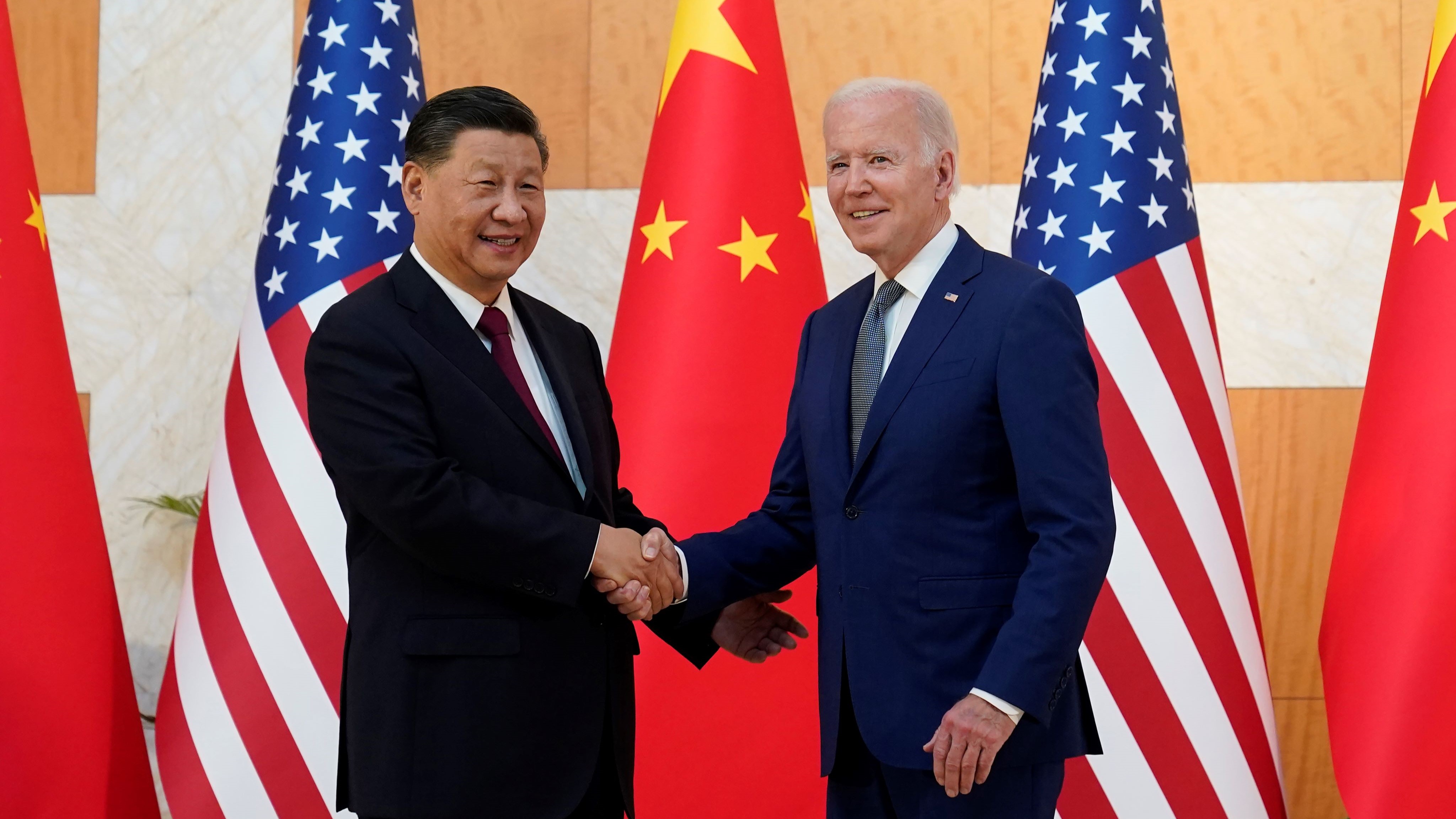U.S.-China Relations: Breakdown And The Looming Cold War

Table of Contents
Economic Competition and Decoupling
The economic relationship between the U.S. and China, once characterized by interdependence and rapid growth, has become increasingly fraught with tension. This economic decoupling is a major factor contributing to the overall deterioration of bilateral relations.
Trade Wars and Tariffs
The trade wars initiated under the Trump administration, while somewhat eased under the Biden administration, left a lasting impact. The imposition of tariffs on billions of dollars worth of goods led to retaliatory measures from China, significantly disrupting global supply chains.
- Increased tariffs on goods: These tariffs impacted a wide range of products, increasing prices for consumers in both the U.S. and China.
- Retaliatory measures from China: China responded with its own tariffs, further escalating the trade war and harming businesses on both sides.
- Disruption of global supply chains: The trade war disrupted established supply chains, leading to delays, shortages, and increased costs for businesses worldwide. This US-China trade war highlighted the interconnectedness of global economies and the vulnerabilities created by such intense economic competition.
- Impact on consumer prices: Tariffs and supply chain disruptions ultimately led to higher prices for consumers, impacting their purchasing power and fueling inflation.
The legacy of this US-China trade war continues to shape the economic relationship, fostering a climate of distrust and suspicion.
Technological Rivalry
Beyond trade disputes, a fierce technological rivalry is brewing between the U.S. and China. This Tech Cold War encompasses various sectors, creating further strain on the overall relationship.
- Restrictions on Chinese tech companies: The U.S. has imposed restrictions on several Chinese tech companies, citing national security concerns and intellectual property theft.
- Investment limitations: Restrictions on investment in sensitive technologies like 5G and artificial intelligence (AI) aim to limit China's technological advancement. The AI race is a key element of this competition.
- Concerns over intellectual property theft: Concerns persist about China's practices related to intellectual property rights, leading to further tension and distrust.
- The development of domestic technology industries: Both countries are investing heavily in developing their domestic technology industries to reduce reliance on each other, furthering the economic decoupling. This semiconductor shortage, for example, is a key driver of this push for domestic production.
Geopolitical Tensions and Military Buildup
Geopolitical tensions, particularly in the Asia-Pacific region, are further exacerbating the strained U.S.-China relationship. A significant military buildup by both countries only intensifies the risk of conflict.
Taiwan Strait Crisis
The Taiwan Strait remains a potential flashpoint, with China asserting its claim over Taiwan and the U.S. maintaining its commitment to the island's defense.
- China's assertive military postures: China has increasingly engaged in military exercises and assertive actions near Taiwan, raising concerns about a potential invasion.
- US arms sales to Taiwan: The U.S. continues to provide arms to Taiwan, further escalating tensions with China.
- The "One China" policy: The ambiguity surrounding the "One China" policy, particularly regarding the U.S. commitment to Taiwan's defense, contributes to the uncertainty.
- Increased naval activity in the South China Sea: The increasing naval presence of both countries in the South China Sea adds to the overall regional instability and the risk of accidental conflict. Cross-strait relations are at a critical juncture.
South China Sea Disputes
China's assertive actions in the South China Sea, including island building and expansive maritime claims, challenge international law and regional stability.
- Island building: China's construction of artificial islands in the South China Sea has fueled tensions with neighboring countries.
- Maritime claims: China's expansive maritime claims in the South China Sea clash with those of other countries in the region.
- Freedom of navigation operations: The U.S. conducts freedom of navigation operations in the South China Sea, challenging China's claims and maintaining its commitment to international law.
- International law challenges: China's actions in the South China Sea raise significant concerns about its adherence to international law and the rules-based international order. These territorial disputes have major implications for maritime security.
Ideological Differences and Human Rights Concerns
Fundamental ideological differences and human rights concerns further complicate the relationship, hindering meaningful cooperation.
Human Rights Abuses in Xinjiang and Hong Kong
Concerns over human rights abuses in Xinjiang and the crackdown on democracy in Hong Kong have significantly strained U.S.-China relations.
- Concerns over treatment of Uyghurs: The alleged human rights abuses against the Uyghur Muslim minority in Xinjiang have drawn widespread international condemnation.
- Crackdown on democracy in Hong Kong: China's actions in Hong Kong, aimed at suppressing dissent and undermining its autonomy, have raised concerns about its commitment to the "one country, two systems" framework.
- Sanctions imposed by the US and other countries: The U.S. and other countries have imposed sanctions on Chinese officials and entities in response to these human rights concerns.
- International pressure: International pressure on China to improve its human rights record continues to grow, further impacting the relationship with the U.S.
Divergent Political Systems
The fundamental differences between the U.S. democratic system and China's authoritarian rule create challenges in communication and understanding.
- Different values: The U.S. and China hold vastly different values and political ideologies, making it difficult to find common ground on many issues.
- Approaches to governance: The different approaches to governance and political systems make it challenging for both countries to understand and appreciate each other's perspectives.
- Challenges in communication and understanding: These fundamental differences in values and political systems often lead to miscommunication and misunderstandings, further exacerbating tensions. This authoritarianism vs. democracy divide is a central feature of the conflict.
Conclusion
The breakdown in U.S.-China relations is a complex issue with far-reaching consequences. Economic decoupling, geopolitical tensions, and ideological differences contribute to a growing sense of a looming Cold War. The potential for conflict in the Taiwan Strait and the South China Sea adds another layer of complexity. Addressing these challenges requires careful diplomacy, clear communication, and a willingness to find common ground where possible. However, given the current trajectory, the prospect of a prolonged period of strategic competition between the U.S. and China seems increasingly likely. Understanding the intricacies of this U.S.-China relationship is crucial for navigating the challenges ahead. Further research into the specific areas of conflict, like the South China Sea disputes and the Taiwan conflict, will provide a more nuanced understanding of this important geopolitical dynamic. Staying informed about the evolving U.S.-China relations is essential for all global citizens.

Featured Posts
-
 Nintendos Action Ryujinx Switch Emulator Development Ceases
Apr 22, 2025
Nintendos Action Ryujinx Switch Emulator Development Ceases
Apr 22, 2025 -
 Turning Trash To Treasure An Ai Powered Podcast From Scatological Documents
Apr 22, 2025
Turning Trash To Treasure An Ai Powered Podcast From Scatological Documents
Apr 22, 2025 -
 Ftc To Appeal Activision Blizzard Acquisition Decision
Apr 22, 2025
Ftc To Appeal Activision Blizzard Acquisition Decision
Apr 22, 2025 -
 Supreme Court Hearing On Obamacare Trumps Unexpected Role And Rfk Jr S Political Future
Apr 22, 2025
Supreme Court Hearing On Obamacare Trumps Unexpected Role And Rfk Jr S Political Future
Apr 22, 2025 -
 New Business Hot Spots Across The Country An Interactive Map
Apr 22, 2025
New Business Hot Spots Across The Country An Interactive Map
Apr 22, 2025
